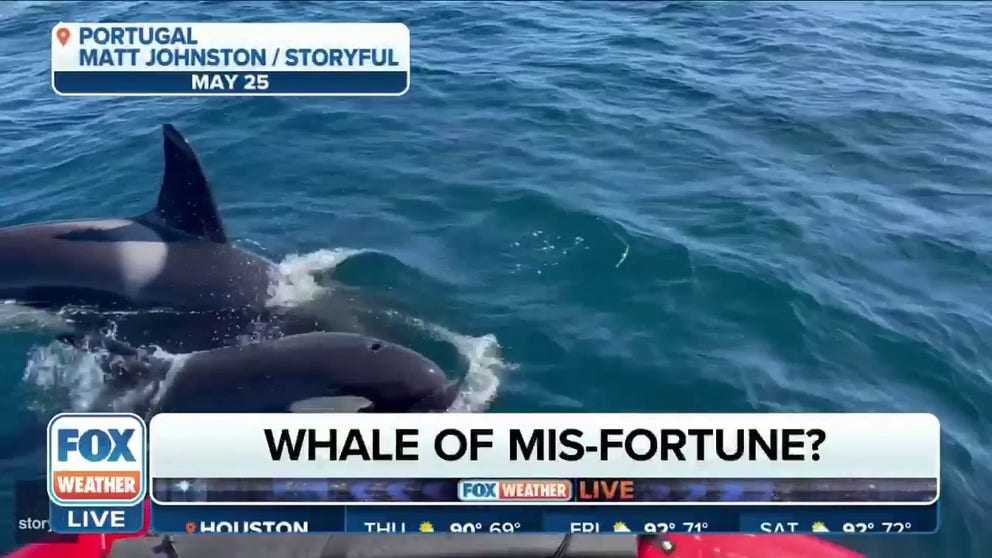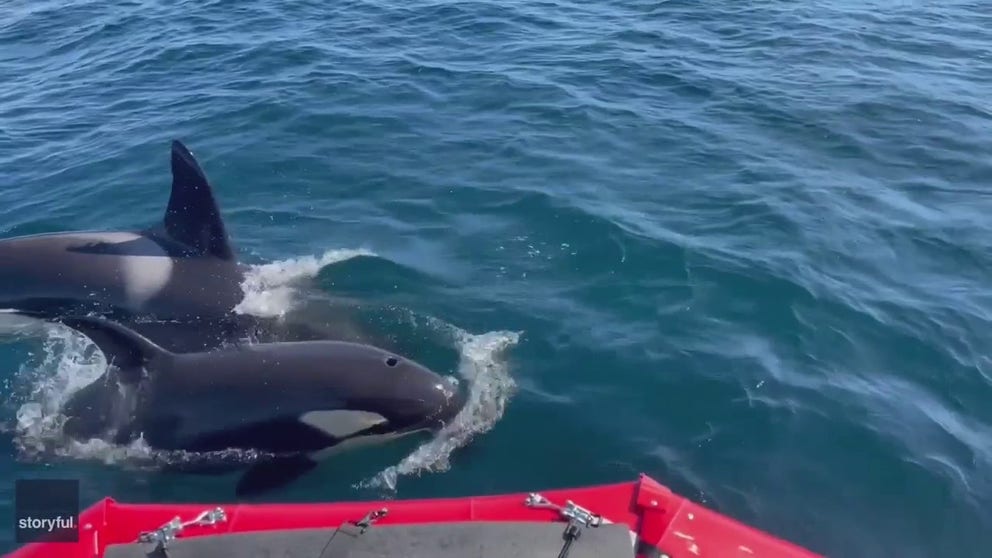Why are killer whales attacking ships?
Ochestrated attacks by orca pods on ships off teh coast of Spain and Portugal started in 2020. Three boats sunk already and attacks continue. Scientists are baffled but have a few ideas why.
Why are killer whales attacking ships?
Marine Mammal Biologist Hanne Strager discussed recent orca attacks on ships off the Iberian Peninsula with FOX Weather. Scientists can't agree on why it is happening but Strager gives a few theories.
Killer whales have been attacking ships off the Iberian Peninsula since May 2020, and scientists are perplexed. So far, three yachts have sunk, the most recent on May 4. Many more had to be towed away after orcas rammed the boats, with the most recent on May 25.
"We just don't know. And in fact, we may never know. What is for sure is that these whales have picked up the behavior from each other," marine mammal biologist and author of The Killer Whale Journals," Hanne Strager told FOX Weather.
"So in the beginning, they were not very many participating in it, and now at least half the population is doing it," she continued. "So they're learning this behavior from each other and doing it."
KILLER WHALES ATTACK ON TWO GRAY WHALES CAPTURED IN STUNNING VIDEO OFF CALIFORNIA
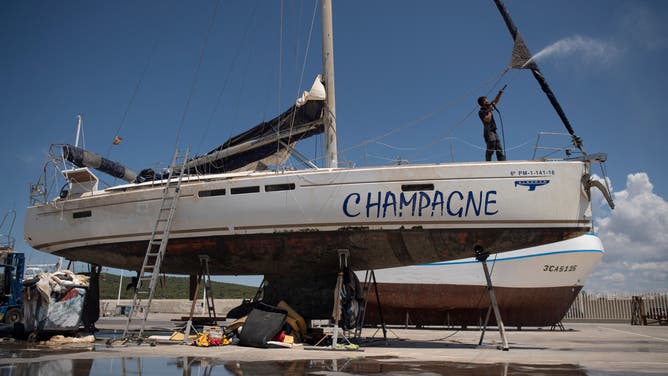
This is the latest ship sunk after an orca attack. It was recovered and pulled to shore.
(JORGE GUERRERO/AFP / Getty Images)
Hundreds of interactions and attacks
Early on May 25, a group of at least three killer whales rammed a 66-foot sailboat named the Mustique. The whales broke the rudder and pierced the hull, according to Reuters. The crew of four summoned help for the sinking ship, and the Mustique was towed to shore. That was just one out of 20 ship-orca interactions reported in May 2023 alone.
Another sailor took a video of a pod attacking his boat off of Portugal in October 2021. It shows adults and juveniles circling and ramming the boat, knocking parts off.
"The larger pair in the orca pod would batter the boat with their heads, turning it 90 degrees, while the younger pair would attack the rudder," Matt Johnson told Storyful.
Watch orcas ram boat off Portugal
Tense moments for a man watching orcas circle then attack his boat off Portugal. He said the larger whales were ramming the boat with their heads, turning it in circles. The smaller whales attacked the rudder. You can see chunks of boat float away.
A 2022 study found that out of 49 attacks that year, whales damaged ships in about 73% of interactions. And 25% of those had to be towed back to port.
The study's author told Live Science that whales target about one out of every 100 ships passing around the peninsula.
The Cruising Association with Grupo Trabajo Orca Atlantica (GOTA) has been following and studying the subpopulation of less than 50 endangered killer whales. The scientists report that about 15 are troublemakers.
WATCH: SPECTACULAR UNDERWATER FOOTAGE CAPTURES ORCA ‘ORCHESTRA’ IN ICY ANTARCTICA WATERS

A technician repairs the damaged rudder of the Mustique.
(JORGE GUERRERO / AFP / Getty Images)
The groups collected over 130 reports of attacks in just three years from sailors around Spain and Portugal and over 500 reports of interactions. They believe many more attacks went unreported. About 86% of the boats are sailboats, and 3% are fishing boats. The vast majority of the attacks are in the western Strait of Gibraltar.
NO FLUKE: WHALE WITHOUT TAIL SPOTTED OFF CALIFORNIA COAST
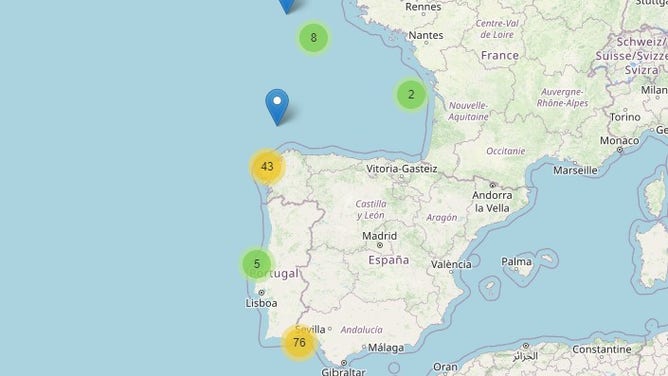
This is the orca interaction map since 2020. Go to theca.org.uk/orcas/reports to zoom in and read eyewitness accounts.
(Cruising Association / FOX Weather)
Why do whales attack?
Strager told FOX Weather that there are three theories for why whales might attack.
"Maybe one whale, several whales have had an incident with a boat that may be a collision, maybe an animal was hurt or even killed," Stager discussed in one paper. "And then the rest of the group sort of feel that now sailing vessel have become dangerous, and they ram them."
The revenge hypothesis surmises that a mother was injured by fishing lines or a rudder and taught her young.
"Another hypothesis is that these whales live in an environment that's very stressful," Strager said. "There's a lot of ship traffic; there's a lot of noise; there are a lot of pollutants; so that it's a reaction to a stressful life."
SPECTATORS GATHER AS KILLER WHALE WASHES ASHORE FLORIDA COAST
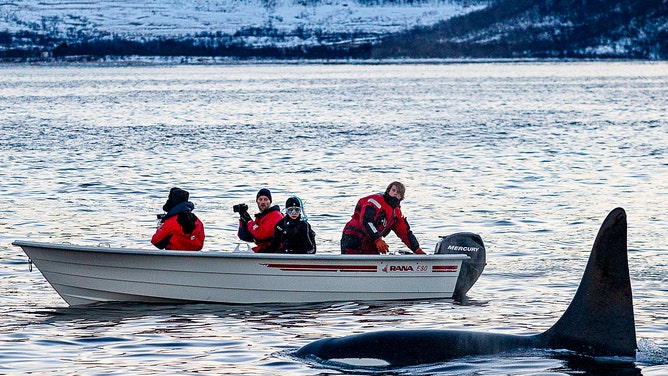
File: Other orca populations worldwide don't routinely attack boats.
(Hanne Strager / FOX Weather)
Scientists feel that the mechanical sounds coming from the rudder, autopilot and depth sounder attract the orcas, which learned without a rudder, boats can't sail.
"And the third hypothesis is, believe it or not, that they're doing it for fun, that they are playing around with the sailing vessels and the riders," Strager said. "They just think it's fun to ram the boat. And that may very likely be could very likely be the explanation."
Any explanation is concerning, wrote a GOTA scientist in a paper.
"We cannot discard that more individuals are going to learn this new behavior, interacting with the vessels, and that probably the situation is going to aggravate," the paper stated.
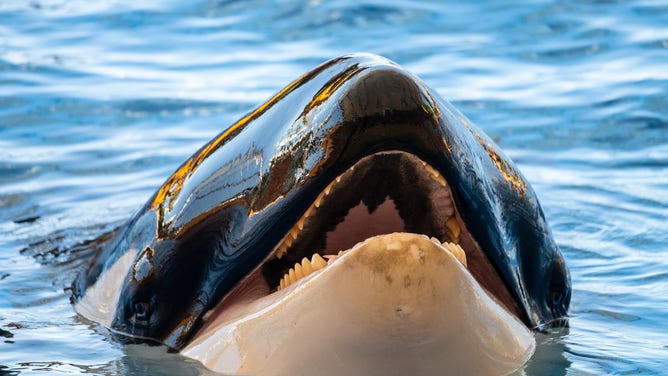
File: An orca showing its teeth.
(Marcos del Mazo/LightRocket / Getty Images)
"If this situation continues or intensifies, it could become a real concern for the mariner's safety and a conservation issue for this endangered subpopulation of killer whales (rather by self-induced injuries or mariners protecting their assets and harming the whales), especially in regions characterized by intense maritime traffic, as the Strait of Gibraltar," the paper continued.
Other populations of orcas around the world don't exhibit the same aggressive behavior.

File: An orca breaches in Antarctica.
(Niall Shannon / U.S. Coast Guard via Storyful / FOX Weather)
Phases of attack
The coordinated attacks follow a pattern.
Phases of attack, according to GOTA:
- Approach: A quick and stealthy approach surprises the crew.
- Contact and steering: Under the boat, the whales start touching the boat, apparently curious. The contact usually focuses on the rudder, which whales push with their heads and bodies. The boat spins. The harder the crew fights back against the whale attack with steering, the harder and more frequent the whale pushes become.
- Stopping: Whales continually hit the boat until the captain stops it or the broken rudder prevents movement.
- Disinterest: Whales lose interest and swim away.
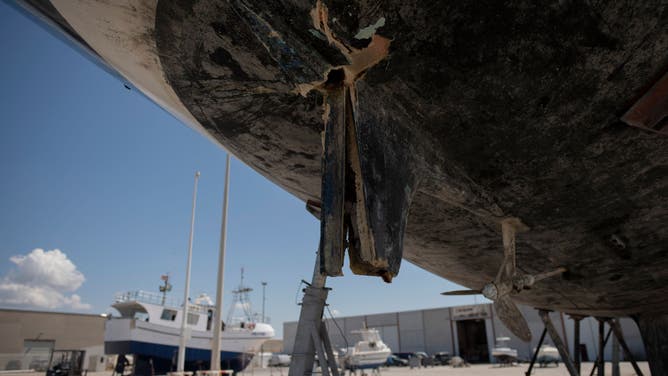
Damage to the Mustique.
(JORGE GUERRERO/AFP / Getty Images)
Eyewitness reports tracked by the Cruising Association show that the average attack last around half an hour, but some stretched out closer to an hour and a half and some were quicker than 5 minutes.
"Everything was very fast," wrote a captain who said the attack was less than 5 minutes. "They focused on the rudders and nothing else. No jumping, no demonstration to impress."
In most reports, the crews and passengers say that the whales only seem interested in attacking the boat, not people.
"There (have) been three boats that (have) been sunk because there's been damage to the rudders. Everybody on board these three vessels (was) rescued," Stanger said. "And the people who have experienced it most say that they don't feel any aggression from the whales, that the whales are interested in the boats, but not in the people. So nobody has been hurt, but a lot of vessels have actually been wrecked."

File: Orca swimming.
(Hanne Strager / FOX Weather)
How to prevent attacks
A behavioral scientist working with GOTA suggested that the whales want to get a response from people. The scientist studied orcas in captivity.
"They will hide from their keepers beneath an overhang in their aquarium, only to splash them when they peer over to look for the orcas," wrote the Cruising Association. "This is why the Safety Protocol advises to keep a low profile in order to minimize interest level."
The association also recommends sailing in shallow water, less than 130 feet deep and not more than 2 miles from shore. Sail during the day, although a few attacks happened at night. Turn off autopilot. Play dead, and hopefully whales will lose interest sooner.
The group also noted that a black hull color may increase the impact of the interaction, while copper may reduce it.
